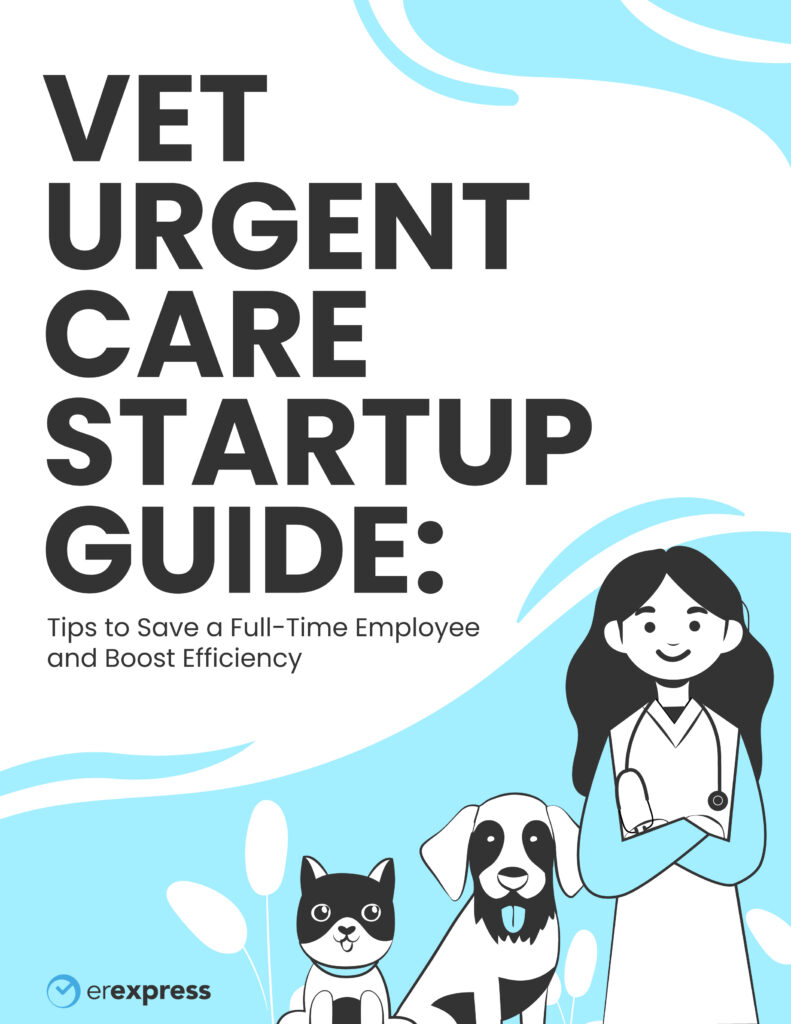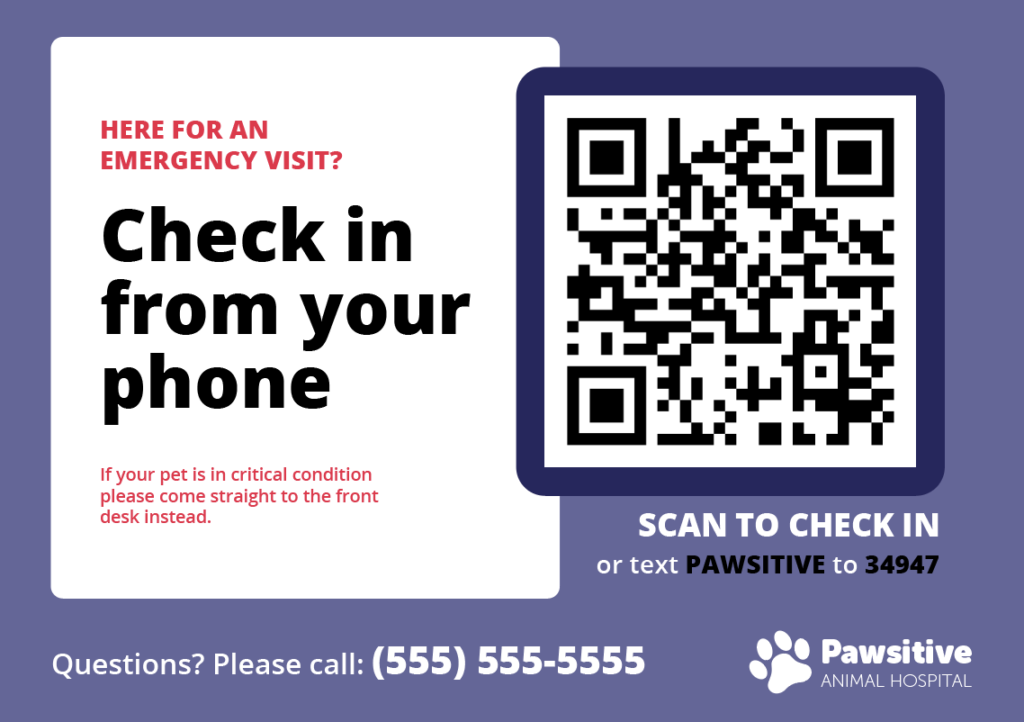
Tips to Save a Full-Time Employee and Boost Efficiency. Download your guide today!
Enter your name and email below to discover how you can meet a growing demand and improve pet owner satisfaction.
For many in the veterinary field, the COVID-19 pandemic has greatly accelerated burnout and staffing shortages as volume and, in effect, wait times and phone calls have increased. It’s no surprise that pet ownership increased during the pandemic, with many finding themselves stuck at home with newly found free time and/or flexible work-from-home schedules – around 1 in 5 American households ended up getting a pet during the pandemic(1). With this increase in pet ownership, the average number of appointments booked at veterinary practices increased 4.5% in 2020 and went up to 6.5% in 2021(2). Wait times at veterinary practices also increased, but not necessarily because of more sick pets. Instead, safety measures put in place such as curbside visits that require extra back and forth phone calls, which increased wait times from an average of an 11 minutes in 2019 to 20 minutes in 2020(3) and decreased productivity by about 25%(4). For an animal emergency clinic, the wait time increase and case load was accelerated further by an uptick in referrals and overflow from vet practices that modified their hours due to staffing shortages, were completely booked up for weeks, and/or limited the types of cases they saw. As a result, animal emergency hospitals have started to see more routine cases, which, combined with the fact that they take the most critical cases first and don’t offer appointments, has meant hours-long waits for clients. As a result, many frustrated clients are spending hours waiting in the parking lot calling in and asking ‘how much longer?’ to overworked and under-staffed clinics just trying to hold down the fort(5).
Because of this strain on the animal healthcare industry, accelerated by the pandemic, the turnover rate for veterinary staff, which already wasn’t great pre-pandemic, has only increased especially with veterinary technicians who have the highest turnover rate of all health care positions (6,7). Burnout and high staff turnover can be caused by a number of factors, besides the difficulties imposed by COVID-19, but with the increase in volume and the decrease in efficiency that many animal hospitals have recently experienced, the obvious reaction may be to just hire more people. Unfortunately this solution is expensive and not quickly or easily solved by just hiring more people. Here’s a better way to not only lift some of the burden of your staff’s workload but to also satisfy your clients: turn to technology to automate some of the workload, ease communication, and improve efficiency.

Create a virtual queuing system
Checking clients in can be time consuming and the burden of that task falls on veterinary staff. With a curbside process up in place, check-in has become even more of a headache with the increase of back and forth phone calls from the parking lot to the front desk. Instead, let your clients complete this task themselves by allowing them to check in from your website ahead of their visit, or when they arrive by texting a short code or scanning a QR code with their phone. Once they submit their information, they will automatically show up in a queue that staff manage. Meanwhile pet owners can wait from home, from your parking lot, your lobby, or wherever they prefer because this allows for automated communication as well. Moving pets from queue to queue, based on your specific workflow, can trigger customized SMS alerts letting your clients know what the next step is. This wi
ll greatly reduce the back-and-forth from the parking lot to the office that takes up staff time, while giving you immediate insight into the caseload and eliminating manual entry.
Digitize your intake process
While you’re at it, you might as well eliminate the paperwork and back-and-forth that comes with getting your clients registered. Turn your clipboards into digital forms that clients can receive as soon as they get checked in. Whether you need to gather signatures for consent forms or you need to serve up specific questions based on the answers they provide, this can easily be done using a mobile intake form, which allows for electronic signatures, conditional logic, image or file uploads and more. As soon as the forms are submitted they can attach to each client’s listing in your queue so the work is done for you without having to leave the building or worst yet, manually fill in forms while talking with the client over the phone.
Utilize two-way texting
By far one of the most difficult and frustrating aspects of the curbside process is the sheer volume of phone calls it creates. Meanwhile, you only have so many staff members that can take the phone calls, calls that range from simple questions about pet care to time-consuming registration questions and discussion of the DVM’s findings. This results in overloaded phone lines and long hold times which makes your clients frustrated and your staff members stressed and unable to devote as much of their time to other important tasks. The best way to clear up your phone lines is to use the automated SMS messages from the virtual queuing process, and in addition, utilize two-way texting. Two-way texting gives your staff the ability to send personalized or templated messages out to multiple clients at a time, while receiving their responses, which they can address more quickly and efficiently than dealing with a game of phone tag. This process works well because 85% of Americans own smart phones, including 61% of people over the age of 65(8) and better yet they’re much more likely to check and respond to those text messages than they would a phone call, email, or voicemail. In fact, texts have a 99% open rate(9) and 45% of texts receive a response(10). Your clients are more than likely going to be pleased with having the ability to text your business back, about 78% of people in fact(11).
By embracing technology, you can drastically decrease the strain on veterinary staff members and as a bonus, make your clients happier as well. The key lies in automating the processes that are sucking up much of your staff’s time – manual entry and client communication. By giving some of the workload to your clients through the smartphone in their pocket, you’ll find that your staff will have more time and be less stressed. There are no promises that automating your check-in and intake process will completely eliminate burnout and staff turnover, but it’s a big step in the right direction and one that doesn’t require much time or effort to get set up. The majority of our clients are able to implement this new process within 2-4 weeks and many consider it a “lifesaver”.
Start here to learn more about creating a mobile check-in and digital intake process for your veterinary clinic or animal emergency hospital or schedule a demo to see if it’s the right fit for your veterinary business.
We are excited to announce that ER Express is now fully integrated with ezyVet! This powerful collaboration streamlines your practice management by seamlessly connecting ER Express’s online check-in and digital intake tools with ezyVet’s comprehensive veterinary software. Request a demo today to see how this integration can elevate your clinic’s efficiency and enhance the overall experience for your staff and clients.

Enter your name and email below to discover how you can meet a growing demand and improve pet owner satisfaction.
© ER Express. All rights reserved.